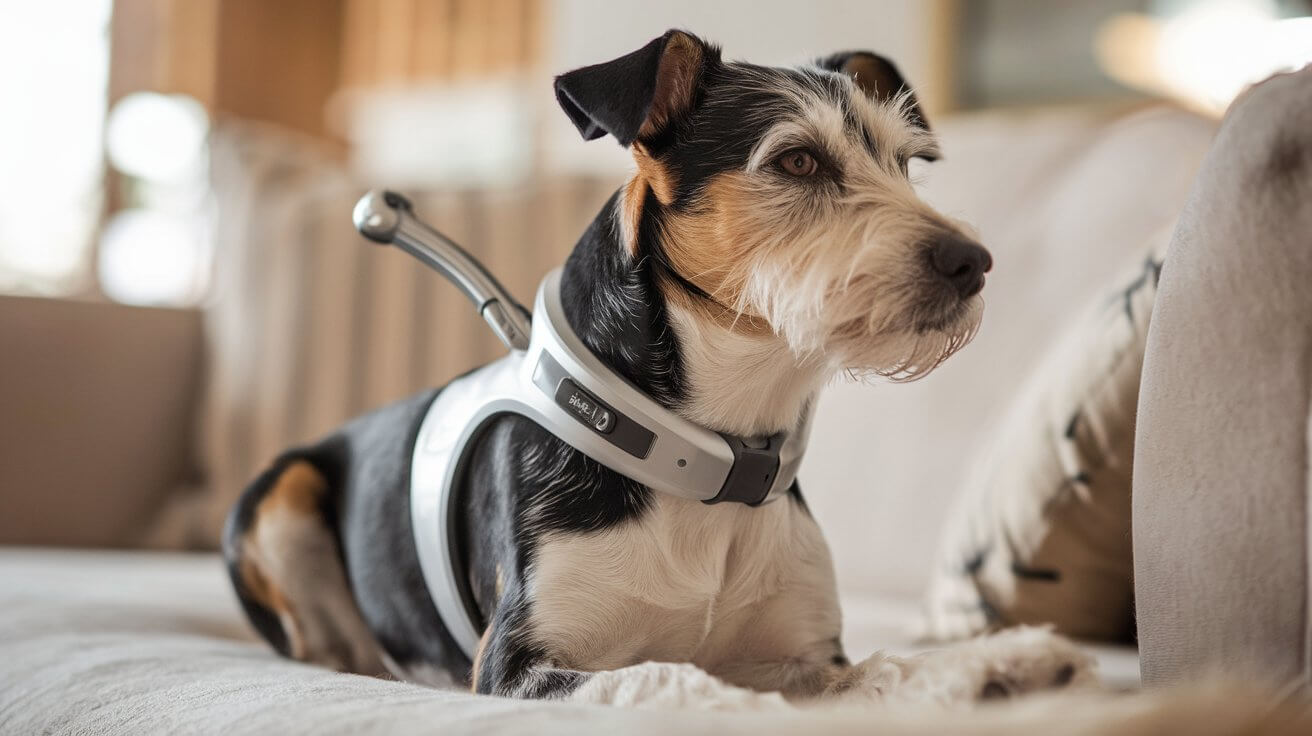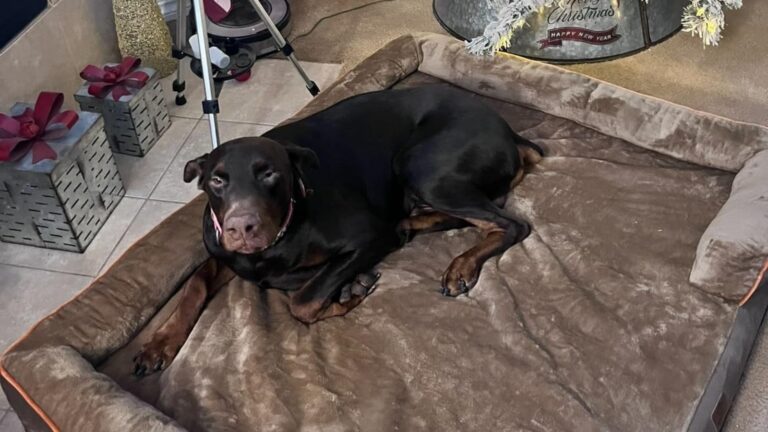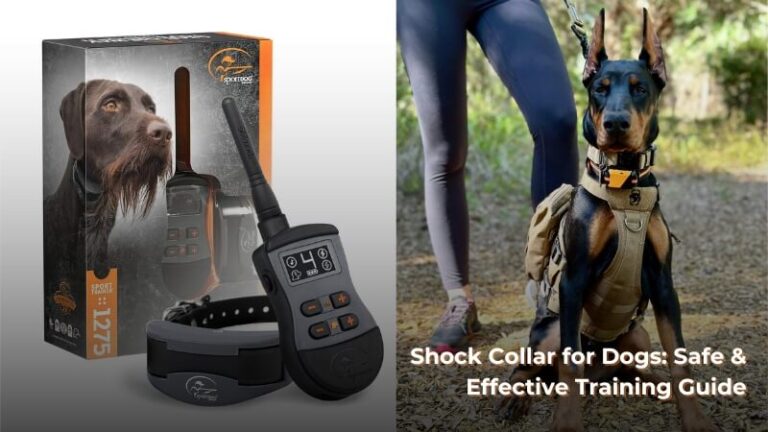Best Shock Collars for Small Dogs: Safe & Effective Training
Training small dogs can be a bit tricky, as they require special care due to their sensitive nature and smaller size. One effective tool for training is a shock collar for small dogs. These collars provide an adjustable level of stimulation, making it easier to correct behavior without causing harm. Unlike collars made for larger dogs, shock collars for small breeds are specifically designed to be lightweight and safe, ensuring comfort during training.
In this guide, we’ll explore the key features to look for in a shock collar for small dogs, review the top products available, and provide tips on how to use them safely. Whether you’re a first-time dog owner or looking for an upgrade, this guide will help you find the best shock collar to suit your dog’s needs. For a deeper understanding of shock collars in general, check out our main guide on Shock Collars for Dogs.
Key Features of a Shock Collar for Small Dogs
When selecting a shock collar for small dogs, it’s crucial to look for specific features that ensure comfort, safety, and effectiveness. Since small dogs are more sensitive than larger breeds, the collar must be lightweight and adjustable. Here are the key features to consider:
1️⃣ Adjustable Intensity Levels
A high-quality shock collar should allow you to adjust the intensity of the stimulation. This is essential for small dogs, as a lower setting is typically sufficient. Look for collars with multiple settings, including beep and vibration modes, to avoid unnecessary shock.
2️⃣ Lightweight & Comfortable Design
The collar should be lightweight and designed specifically for small breeds. A comfortable, snug fit ensures that the dog won’t feel restricted or uncomfortable during training sessions.
3️⃣ Waterproof
Since small dogs are often active outdoors, a waterproof collar is essential. This feature ensures that the collar remains effective even in wet conditions, whether your dog is playing outside or swimming.
4️⃣ Remote Control Range
A remote with a reasonable range is important, especially for training in larger areas like parks or yards. A range of 1000-2000 feet is usually sufficient for most small dog training needs.
5️⃣ Safety Features
Ensure the collar has safety mechanisms like a shock lock or a pause button to prevent accidental shocks, and always choose a collar from a reputable brand.

How to Safely Use a Shock Collar for Small Dogs
Using a shock collar for small dogs requires care and attention to ensure it’s used safely and effectively. Small dogs are more sensitive than larger breeds, so it’s important to follow a few essential steps to make the experience positive.
1️⃣ Proper Fit is Essential
Before using the collar, make sure it fits correctly. The collar should sit snugly on the dog’s neck, but not too tight. You should be able to fit two fingers between the collar and your dog’s neck to ensure comfort. If the collar is too tight, it could cause discomfort or even injury.
2️⃣ Start with Vibration or Beep Mode
For small dogs, it’s best to start with vibration or beep mode to get their attention. Use static shock only if these modes are not effective, and always begin with the lowest setting. This prevents overstimulation and ensures that the dog isn’t subjected to unnecessary discomfort.
3️⃣ Limit Training Sessions
Small dogs can become overwhelmed by long training sessions. Keep training sessions short (5-10 minutes), and allow plenty of breaks to prevent stress. Consistent, brief sessions will lead to more effective learning without causing fatigue or anxiety.
4️⃣ Observe Your Dog’s Behavior
Always monitor your dog for signs of discomfort or distress. If the dog shows any signs of fear, like shaking, yelping, or avoiding the training, stop immediately and adjust the collar settings or try alternative training methods.
By following these simple steps, you can ensure that using a shock collar for small dogs remains safe, effective, and comfortable.
Common Questions About Shock Collars for Small Dogs
When it comes to using a shock collar for small dogs, many pet owners have common questions and concerns. Here are some frequently asked questions to help you make informed decisions and use the collar responsibly.
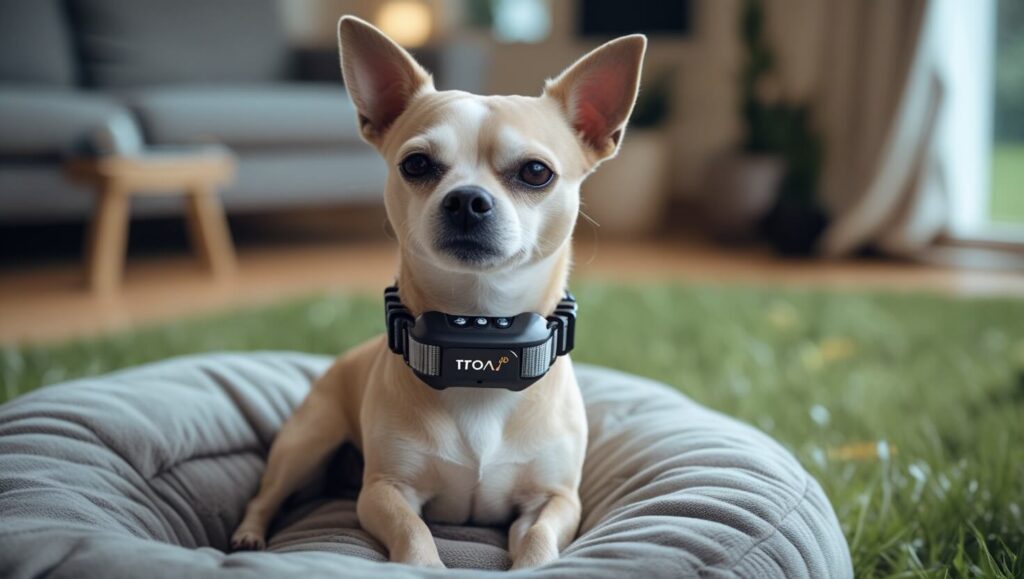
Are shock collars safe for small dogs?
Yes, shock collars can be safe for small dogs when used correctly. It’s important to start with the lowest setting, use vibration or beep modes first, and gradually move to static shock if necessary. Proper fitting is also essential to ensure the collar doesn’t cause discomfort.
📌 Pro Tip: Always monitor your dog’s behavior and adjust the settings if needed. If the dog shows signs of distress, stop using the collar and reassess.
What shock level is ideal for small dogs?
For small dogs, it’s essential to use the lowest shock level initially. Start with vibration or beep mode to get your dog’s attention before considering static shock. Small breeds are more sensitive, so a mild stimulus is usually sufficient for training.
📌 Pro Tip: If using static shock, always start with the lowest intensity and gradually increase only if needed.
Can I use a shock collar on puppies?
It’s generally not recommended to use a shock collar on puppies under 6 months old. Puppies are still in their developmental stages, and it’s better to focus on positive reinforcement methods for early training.
📌 Pro Tip: For puppies, consider using training methods like clicker training or reward-based training before introducing a shock collar.
How long can I leave the shock collar on my dog?
You should never leave a shock collar on for more than 12 hours a day. Prolonged use can cause discomfort or irritation. Ensure you remove the collar during rest periods and replace it periodically to avoid skin irritation.
📌 Pro Tip: Give your dog regular breaks from the collar to ensure comfort and avoid irritation.
By addressing these common questions, pet owners can use a shock collar for small dogs in a safe, effective, and humane manner.
For further FAQs, visit Common Questions About Shock Collars
How Shock Collars Help Small Dogs
Training small dogs can be challenging due to their unique characteristics—often energetic, stubborn, or easily distracted. Traditional training methods can be less effective for these small breeds, especially in environments with distractions or when the dog is off-leash. This is where a shock collar for small dogs can be an invaluable tool.
Why Small Dogs Benefit from Shock Collars
Unlike larger dogs, small dogs are often more sensitive and less likely to respond well to harsh training methods like physical corrections or harsh commands. The adjustable settings on shock collars provide customized stimulation, allowing you to set the appropriate level for your dog’s temperament and size.
- Tailored Stimulation: Shock collars for small dogs allow owners to use beep or vibration modes first, minimizing any discomfort while still providing effective feedback.
- Compact Design: Smaller shock collars are designed to be lightweight and ergonomic, ensuring that your dog’s training collar doesn’t cause unnecessary strain on their neck.
Improved Communication for Training
One of the most significant advantages of using a shock collar for small dogs is the ability to deliver immediate feedback when your dog misbehaves. This quick feedback ensures that your dog associates the behavior with the correction more effectively.
- Longer Remote Range: Many shock collars for small dogs come with a remote control that can be used even from a distance, making them great for outdoor training in larger spaces like parks or yards.
- Enhanced Control: Small dogs can be tricky to train because they often don’t listen to commands right away. With a shock collar, pet owners can maintain consistent communication and reinforce commands, even in noisy environments.
CPG Sec. 655.300 Barking Dog Collar (Withdrawn 2/20/2020)
Gentle Correction and Avoidance of Unwanted Behaviors
- Prevents Excessive Barking: Small dogs are known for excessive barking, especially in response to strangers or other dogs. With the help of a dog bark shock collar, owners can correct this behavior effectively without punishment.
- Corrects Jumping and Pulling: Many small breeds have a tendency to jump on people or pull on the leash during walks. A shock collar allows owners to apply mild corrections and reinforce good behaviors like sitting or walking calmly.
In conclusion, shock collars for small dogs help by providing immediate, adjustable feedback, improving communication, and effectively addressing behavioral issues that small dogs often face in training. For more on how to use shock collars effectively, check out our main guide on Shock Collars for Dogs.
Here is the content for the “Common Mistakes to Avoid When Using a Shock Collar for Small Dogs” section:
Common Mistakes to Avoid When Using a Shock Collar for Small Dogs
Using a shock collar for small dogs can be highly effective, but it’s crucial to use it correctly to avoid causing discomfort or confusion for your pet. Here are some common mistakes dog owners make and how to avoid them.
1️⃣ Using High Shock Levels Too Early
One of the biggest mistakes is starting with a high shock level. Small dogs are more sensitive, and even low-level stimulation can get their attention. Always start with vibration or beep modes, and gradually increase the shock intensity only if needed. Starting too high can cause unnecessary stress for your dog.
2️⃣ Leaving the Collar On Too Long
Shock collars should not be worn for more than 12 hours a day. Prolonged use can cause skin irritation or discomfort. Make sure to remove the collar during breaks, overnight, or when the dog is resting.
3️⃣ Not Monitoring Your Dog’s Reactions
It’s important to observe your dog’s behavior while using the collar. If your dog shows signs of distress, such as shaking, whimpering, or avoidance, stop using the collar immediately and reassess your training method. Your dog’s comfort and emotional well-being should always be the priority.
4️⃣ Not Combining with Positive Reinforcement
Relying solely on the shock collar without positive reinforcement (treats, praise) will not lead to effective training. Make sure to reward your dog for positive behavior to create a well-rounded training plan. Shock collars work best when combined with verbal cues and rewards.
5️⃣ Using the Collar for Punishment
Shock collars should never be used to punish your dog for bad behavior after the fact. The collar is meant to reinforce commands or correct unwanted behaviors in real-time. Using it as punishment after the fact is ineffective and could damage the bond between you and your dog.
By avoiding these common mistakes, you can ensure that using a shock collar for small dogs is both safe and effective, leading to better training outcomes and a stronger bond with your pet.
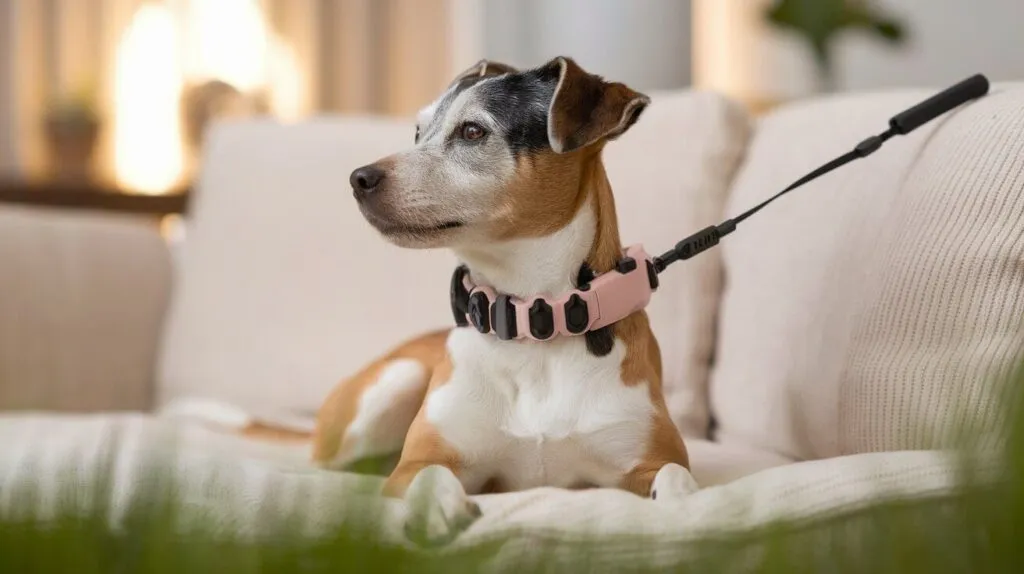
Benefits of Using a Shock Collar Over Other Training Tools
While there are many training tools available for dogs, shock collars for small dogs offer distinct benefits that make them an effective option when used responsibly. Here are some of the key advantages of using a shock collar compared to other training tools:
1️⃣ Quick and Effective Communication
Shock collars provide instant feedback to your dog, which can be crucial for reinforcing commands in real-time. The immediate stimulation helps your dog associate behavior with correction, making training faster and more effective. This is especially helpful in outdoor settings or for dogs that are easily distracted.
2️⃣ Adjustable Settings for Tailored Training
One of the most significant advantages of shock collars is the ability to adjust stimulation levels. This customization ensures the collar is suitable for your dog’s size, temperament, and specific needs. Other tools like leash training or harnesses lack this level of precision in training intensity.
3️⃣ Versatility in Training Modes
Unlike traditional training methods, which may require multiple tools for different behaviors, shock collars often come with multiple training modes, including beep, vibration, and shock. This versatility allows you to choose the appropriate mode based on your dog’s sensitivity and behavior.
4️⃣ Long-Range Training Capabilities
Shock collars typically offer a longer remote range, making them ideal for off-leash training in open areas. Whether you’re at a park or training in your backyard, shock collars allow you to maintain control over your dog from a distance. Traditional training methods may require you to be physically close to the dog, limiting the scope of training.
5️⃣ Effective for Persistent Behavior Problems
For behaviors like excessive barking, pulling on the leash, or stubbornness, shock collars can be more effective than other tools like no-pull harnesses or clicker training. They provide a more direct form of correction, making it easier to address persistent or ingrained behaviors that other tools may not fully resolve.
6️⃣ Safe When Used Responsibly
When used correctly, shock collars are safe for small dogs. The adjustable settings and humane features allow you to train your dog without causing pain or harm. Unlike prong collars, which can be uncomfortable or even cause injury, shock collars offer a gentler method of correction.
By using a shock collar responsibly and combining it with positive reinforcement, you can provide effective, humane training for your small dog.
Conclusion
Choosing the right shock collar for small dogs is essential to ensure effective training without causing discomfort. By focusing on adjustable intensity, lightweight design, and safety features, you can help your dog learn commands and correct unwanted behaviors in a humane way. Always start with the lowest settings, use vibration or beep modes first, and monitor your dog’s reactions throughout the training process.
Remember, shock collars should be used responsibly and in combination with positive reinforcement for the best results. With the right approach, you can make training a pleasant experience for both you and your small dog. If you’re still unsure, consult with a professional dog trainer to ensure the right training tools are used for your pet’s needs.

